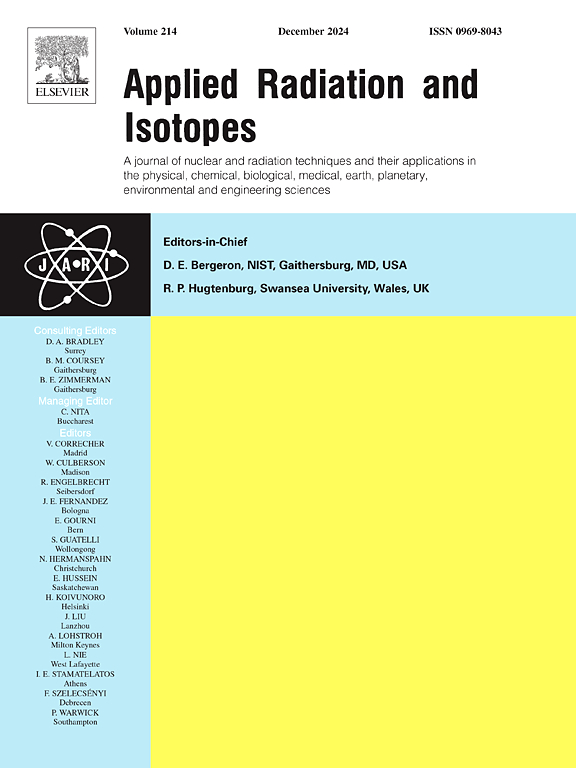微计算机x射线断层扫描所得细骨料基质孔径分布与一组线性回归的比较
IF 1.6
3区 工程技术
Q3 CHEMISTRY, INORGANIC & NUCLEAR
引用次数: 0
摘要
细骨料基体由沥青粘结剂、细骨料、填充材料和孔隙组成。由于沥青混合料的疲劳损伤往往与小尺度现象有关,且受混合料细部的影响很大,因此它已被用于理解沥青混合料的行为。此外,一些研究人员指出,在这些样品的设计中考虑到孔隙大小分布的重要性,因为它们与水分损伤有关。本研究旨在比较使用x射线微计算机断层扫描确定9种细骨料基质样品孔径分布的方法与通过分析孔隙体积与样品密度之间的一组线性回归来确定样品孔径分布的方法。结果表明,通过线性回归得到的孔隙分布与x射线计算机微断层扫描得到的孔隙分布相似,平均样本密度高估了线性回归集模型的孔隙体积的6.1%。观察到的采样误差小于0.59%,表明样品数量足以估计FAM2的孔隙体积。因此,假设检验结果证实,在95%的置信水平下,差异不能被认为是显著的。因此,可以认为线性回归集模型足以描述x射线显微计算机断层扫描获得的孔隙体积。本文章由计算机程序翻译,如有差异,请以英文原文为准。
Comparison between pore size distributions of the fine aggregate matrix obtained by micro-computed X-ray tomography and a set of linear regressions
The Fine Aggregate Matrix is composed of asphalt binder, fine aggregates, filler materials, and pores. It has been used to understand the behavior of asphalt mixtures since fatigue damage in asphalt mixtures is frequently related to small-scale phenomena with considerable influence off the fine part of the mixture. In addition, several researchers point out the importance of taking into account the pore size distribution in the designs of these samples, as they are related to moisture damage. This research aimed to compare the method of determining pore size distribution of nine Fine Aggregate Matrix samples using X-ray micro-computed tomography to the method of determining pore size distribution by analyzing a set of linear regressions between the pore volume and the density of the samples. The results showed that the pore distribution obtained through linear regression resembles the pore distribution obtained from X-ray computed microtomography and that the average sample density overestimated the linear regression set model by up to 6.1 % of the pore volume. The observed sampling error was less than 0.59 %, which shows that the number of samples was sufficient to estimate the pore volume of the FAM2. Thus, the hypothesis test result confirmed that the difference cannot be considered significant for a 95 % confidence level. Therefore, the linear regression set model can be considered adequate to describe the pore volume obtained by X-ray micro-computed tomography.
求助全文
通过发布文献求助,成功后即可免费获取论文全文。
去求助
来源期刊

Applied Radiation and Isotopes
工程技术-核科学技术
CiteScore
3.00
自引率
12.50%
发文量
406
审稿时长
13.5 months
期刊介绍:
Applied Radiation and Isotopes provides a high quality medium for the publication of substantial, original and scientific and technological papers on the development and peaceful application of nuclear, radiation and radionuclide techniques in chemistry, physics, biochemistry, biology, medicine, security, engineering and in the earth, planetary and environmental sciences, all including dosimetry. Nuclear techniques are defined in the broadest sense and both experimental and theoretical papers are welcome. They include the development and use of α- and β-particles, X-rays and γ-rays, neutrons and other nuclear particles and radiations from all sources, including radionuclides, synchrotron sources, cyclotrons and reactors and from the natural environment.
The journal aims to publish papers with significance to an international audience, containing substantial novelty and scientific impact. The Editors reserve the rights to reject, with or without external review, papers that do not meet these criteria.
Papers dealing with radiation processing, i.e., where radiation is used to bring about a biological, chemical or physical change in a material, should be directed to our sister journal Radiation Physics and Chemistry.
 求助内容:
求助内容: 应助结果提醒方式:
应助结果提醒方式:


